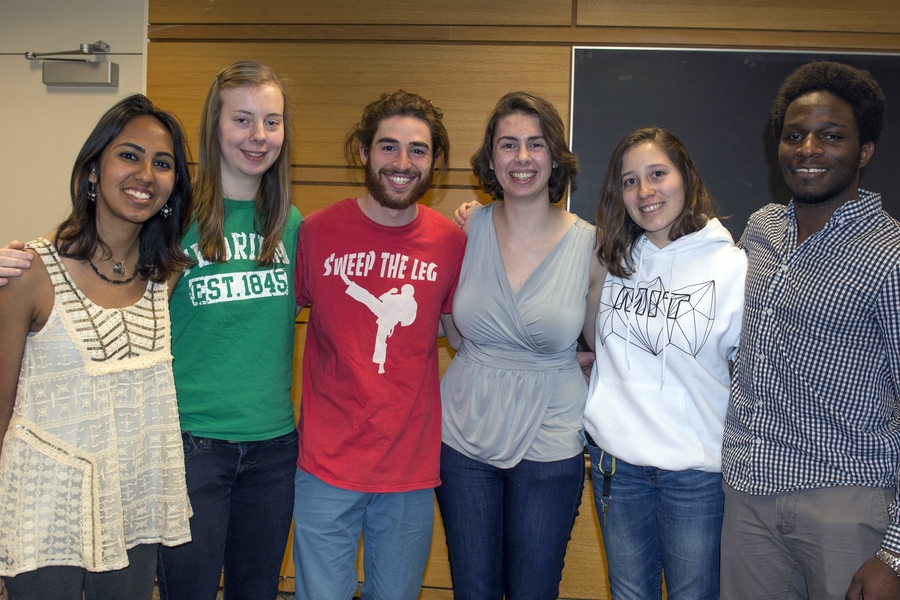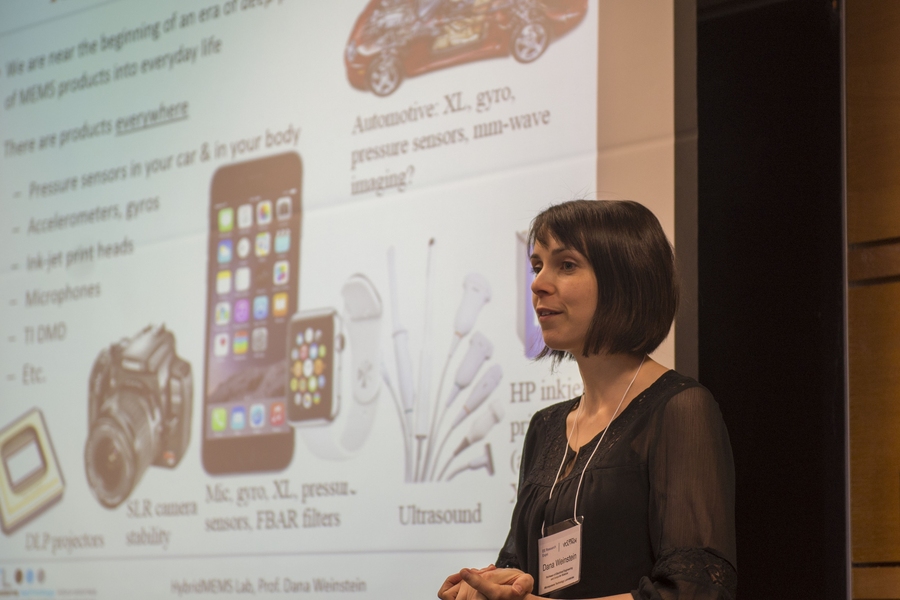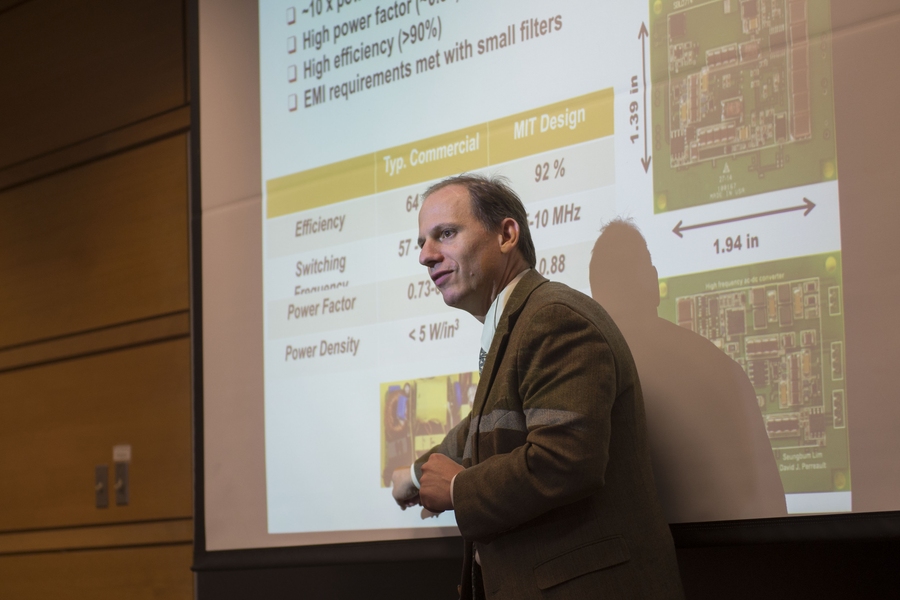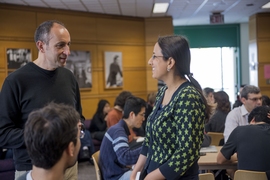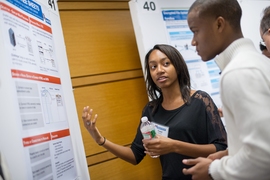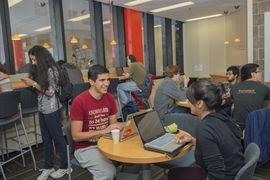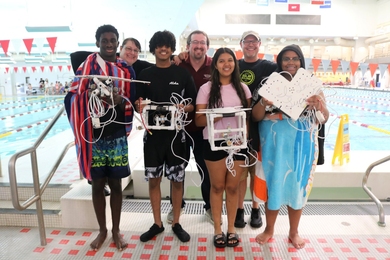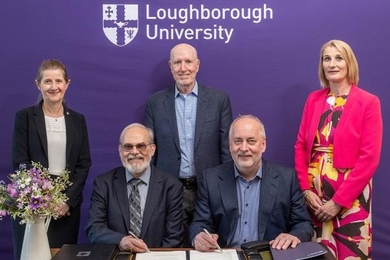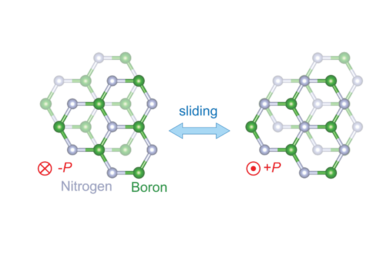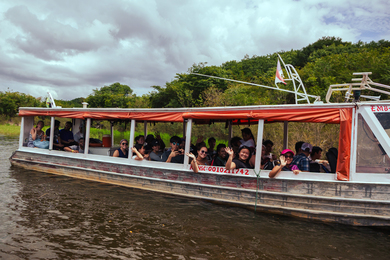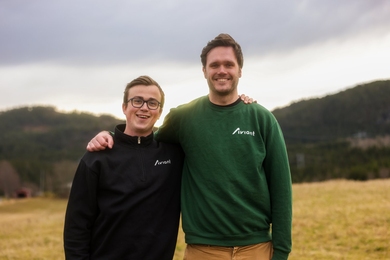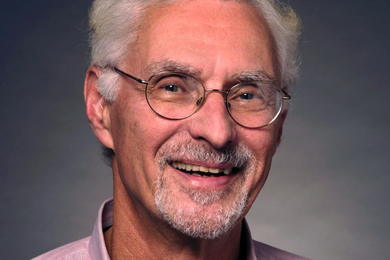The members of Voltage, a new group in MIT’s Department of Electrical Engineering and Computer Science (EECS, also known as Course 6), want to interest more freshmen and EECS students in the field of electrical engineering (EE). Sponsored by the MIT IEEE/ACM Club, the group is working to build a cohesive network for students in both the EE degree program (6-1) as well as for students leaning toward EE in the EECS degree program (6-2) by offering support and resources in academics, research, and careers.
“Because there are so few of us,” says junior Neerja Aggarwal, “it’s easy to get lost in the sea of Course 6.” She notes that due to the size of the department (now at 1,450 undergraduates), it can be challenging for freshmen and newly declared Course 6-1 and EE-leaning 6-2 majors to find the resources they need. Aggarwal, who switched from materials science and engineering in her sophomore year, adds that the group wants to create a smaller department feel for this segment of EECS.
The Voltage organizing group, including Aggarwal and fellow students Nick Arango, Julia Belk, Sarah Hensley, Paul Kalebu, Allison Lemus, Fiona Paine, and Malika Shahrawat, began to meet as a subcommittee of the MIT IEEE/ACM Club in January during Independent Activities Period. Their first large group event, the IEEE Voltage Research Expo, was held April 1 and featured seven EE faculty who talked about their research. The organizers’ goal was to expose students to the breadth and opportunities in EE at MIT and help them find a faculty research match, notes Julia Belk, who worked with Aggarwal to head the event. More than 80 students — from all years and not only Course 6 — attended expo presentations, which were followed by serious and fruitful networking between students and speakers.
Associate Professor Dana Weinstein was impressed with the interest and initiative taken by the 6-1 students. “The Voltage group has taken initiative to develop a real community among students in EE,” she says, adding that Voltage provides a home base for students to explore the depths of electrical engineering, which extend far beyond traditional circuits and transistors. “The effort they have put in — both in terms of technical exposure as well as social events — is really refreshing and a much needed asset in the department.”
"You guys did awesome!" Colin McDonnell, EECS junior, enthused to the Voltage organizers. “This was the greatest student‑faculty event ever." EECS sophomore Amelia Becker found the meeting particularly useful as she was trying to make plans to select and apply for a summer undergraduate research opportunity program (UROP).
Professor Karl Berggren was pleased to share projects that would be exciting for the students to learn about and in areas where undergraduates would learn valuable skills. “It was wonderful to see students show such enthusiasm for the ongoing research in electrical engineering.” he says. “After the event, a number of students approached me to discuss UROPs, and I’ve hired a few for this summer. It’s great to see so many bright young people with so much potential (pun intended)!”
The Voltage organizers also aim to expose current and future EE students in the department to the attractive market for hardware electrical engineers. “Going to the career fair, it’s very easy to get sucked into the software world,” Aggarwal says. So the Voltage organizers are building a list of Course 6-1 alumni from the classes of 1976 to 2005 who have worked in consulting, robotics, integrated circuits, and venture capital and who are interested in sharing their experiences with new and continuing Course 6-1 students.
At their first student / alumni dinner held on April 21, Course 6-1 students and interested freshmen shared an evening of supper and round-robin conversations about all things electrical engineering with six Course 6 alumni. This and future mixers with alumni are meant to expose students to a wide variety of career paths open to electrical engineers — extending beyond hardware to venture capital and startups.
Kat Kononov, ’12, a member of the technical staff at MIT Lincoln Laboratory was pleased to share her experience with current undergrads and catch up with several fellow alumni. In particular, she was impressed that three women are heading the Voltage organization. “We are so vastly underrepresented in 6-1. … It felt so discouraging at times to be the only girl in a class,” she said. “If I can show up and be an example of success to one of them, my day is made.”
Roozbeh Ghaffari ’01, MEng ’03, PhD ’08, co-founder and vice president of Technology at MC10 Inc. a Cambridge-based company that adapts stretchable electronics to extend human capabilities, was thrilled to spend the evening with the students. “It became clear right away that many students are excited about their UROP and SuperUROP research projects,” he said. “The Voltage event highlighted these activities for me directly from the student's perspective — in ways that would not have been possible over the phone or from a website.” He also found it exciting that students were very interested in innovation and startups.
EECS associate department head David Perreault points to the need for electrical engineers: “Electrical Engineering is the key to addressing the challenges we face as a society — ranging from energy to human health — and it is critical to advancing all of the technology we rely on.”
Having encouraged Voltage organizers as they planned the IEEE Voltage Research Expo, Perreault notes the tremendous opportunity for EE students to engage in a wide array of cutting-edge research areas at MIT from nanotechnology to communications to renewable energy. This is matched with a deep, unmet demand in industry for electrical engineers to work in these areas, he says.
“Whenever I travel to visit companies,” Perreault adds, “the number one request is ‘send us more EE graduates’! With this positive support and potential, Voltage and future 6-1 and 6-2 students have a lot going for them!”
As the 2015 spring term ends, Voltage organizers are already planning for events and activities for the upcoming academic year, including a Voltage Research Expo in February 2016, several alumni dinners each semester, and five study breaks.
